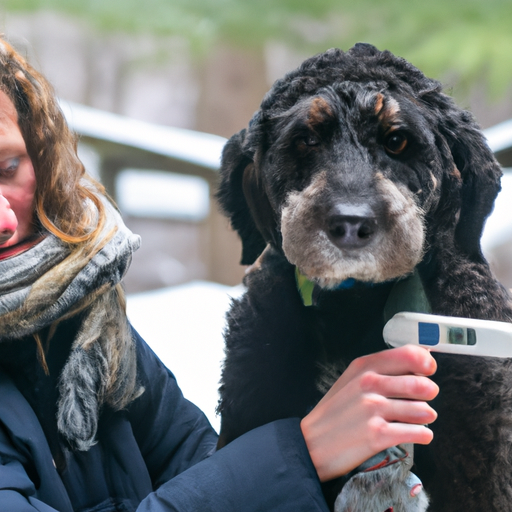Understanding Your Dog’s Tolerance to Cold
Just like us humans, dogs have different tolerances to cold weather. The breed, size, age, and health of your dog can significantly influence their ability to withstand cold temperatures.
- Breed: Some breeds, like Huskies and Bernese Mountain Dogs, are naturally acclimated to cold weather due to their thick fur coats. On the other hand, short-haired breeds like Greyhounds and small breeds like Chihuahuas are more susceptible to the cold.
- Size: Larger dogs tend to tolerate colder temperatures better than smaller ones. That’s because their larger body mass and fat stores provide better insulation.
- Age and Health: Puppies, older dogs, and dogs with health conditions may have a harder time regulating their body temperature, making them less tolerant of the cold.
You know your dog best, and if you notice any signs of discomfort, it’s best to bring them inside immediately.
How to Determine If It’s Too Cold For Your Dog
Here’s a simple rule of thumb: If it’s too cold for you outside, it’s probably too cold for your dog. However, to give you a more precise idea, let’s look at this temperature guide:
| Temperature | Safety for Dogs |
|---|---|
| Above 45°F (7°C) | Safe for most dogs |
| 32°F to 45°F (0°C to 7°C) | Some dogs might feel discomfort |
| Below 20°F (-6°C) | Dangerous for most dogs |
| Below 0°F (-18°C) | Life-threatening for all dogs |
Remember, this is just a guide. Always observe your dog’s behavior and look out for signs they are uncomfortable or in distress.
Protecting Your Dog From the Cold
So, how can you protect your loving companion from the cold? Here are a few tips:
- Dress them appropriately: Doggie sweaters or jackets can provide extra warmth, especially for short-haired, small, or elderly dogs.
- Provide shelter: If your dog spends significant time outside, ensure they have a warm, dry shelter to protect them from the elements.
- Limit outdoor time: On particularly cold days, limit your walks to 10-15 minutes.
- Use doggie boots: These can protect your dog’s paws from cold surfaces and harmful substances like ice melting chemicals.
Recognizing Hypothermia in Dogs
It’s crucial to recognize the signs of hypothermia, a potentially life-threatening condition where your dog’s body temperature drops below normal. Look out for:
- Shivering
- Lethargy
- Muscle stiffness
- Low heart and breathing rates
- Fixed and dilated pupils
If you suspect your dog has hypothermia, wrap them in warm blankets and immediately contact your vet.
Frequently Asked Questions (FAQs)
Q: How long can my dog be outside in the cold?
A: It depends on your dog’s breed, size, age, and health. Always monitor your dog for signs of discomfort.
Q: How cold is too cold for dogs?
A: Below 20°F can be dangerous for most dogs. However, always watch your dog’s behavior to determine if they are uncomfortable.
Q: What are the signs of hypothermia in dogs?
A: Signs can include shivering, lethargy, muscle stiffness, low heart and breathing rates, and fixed and dilated pupils.
Remember, as a caregiver, your dog relies on you for their safety and comfort. Always prioritize their well-being, especially during the colder months.



